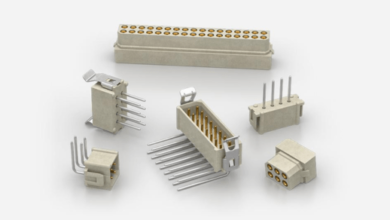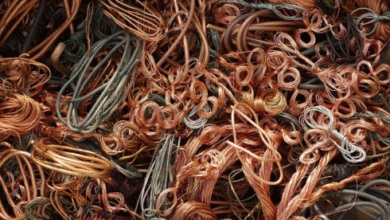Exploring 2D and 3D Printers: A Spotlight on the QIDI MAX 3

In the ever-evolving world of technology, printers have advanced significantly from their traditional 2D roots. Today, both 2D and 3D printers play vital roles in various industries and hobbies. This article explores the capabilities of 2D and 3D printers, with a special spotlight on the qidi max3, a standout model in the 3D printing landscape.
Understanding 2D Printers
2D printers have been a staple in offices and homes for decades. They come in various types, each suited to different needs:
Inkjet Printers: Inkjet printers are renowned for their versatility and ability to produce high-quality color prints. They use liquid ink cartridges to deliver vibrant images and detailed graphics. These printers are ideal for printing photos, marketing materials, and everyday documents. With their ability to handle different paper types and sizes, inkjet printers are a popular choice for both personal and professional use.
Laser Printers: Laser printers operate using toner and a laser beam to create precise, sharp text and graphics. They are known for their efficiency and speed, making them perfect for high-volume printing tasks. Businesses and offices often choose laser printers for their reliability, cost-effectiveness, and quick printing capabilities.
All-in-One Printers: All-in-one printers combine printing, scanning, copying, and sometimes faxing functions into a single device. These multifunctional printers are particularly useful in home offices and small businesses where space is limited but a variety of tasks are needed. They offer convenience and efficiency, reducing the need for multiple devices.
The Rise of 3D Printing Technology
3D printing, or additive manufacturing, represents a significant leap forward in technology. Unlike traditional 2D printing, 3D printing creates three-dimensional objects from digital designs. Here are the primary 3D printing technologies:
Fused Deposition Modeling (FDM): FDM is one of the most common 3D printing methods. It uses melted plastic filaments to build objects layer by layer. FDM printers are appreciated for their affordability and ease of use. They are ideal for creating prototypes, functional parts, and creative models. FDM printers are popular among hobbyists and professionals alike for their versatility and cost-effectiveness.
Stereolithography (SLA): SLA printers use a laser to cure liquid resin into solid layers, producing high-precision parts with a smooth finish. SLA technology is favored for applications that require fine detail, such as intricate prototypes, dental models, and detailed jewelry designs. These printers are known for their exceptional accuracy and surface quality.
Selective Laser Sintering (SLS): SLS technology involves using a laser to fuse powdered materials into solid objects. SLS printers are used for creating durable and functional parts, making them suitable for industrial applications and advanced prototyping. They are valued for their ability to produce complex geometries and functional prototypes.
**A Closer Look at the QIDI MAX 3
Among the numerous 3D printers available today, the QIDI MAX 3 stands out for its advanced features and robust performance. Here’s an in-depth look at what makes this printer a popular choice for both enthusiasts and professionals:
1. Enhanced Print Quality: The QIDI MAX 3 is known for its exceptional print quality. Equipped with a precise motion system and advanced extrusion technology, it delivers high-resolution prints with fine details. Whether you’re working on complex prototypes or detailed models, the QIDI MAX 3 ensures consistent and accurate results.
2. Large Build Volume: One of the standout features of the QIDI MAX 3 is its spacious build volume. This feature allows users to create larger objects or multiple smaller items simultaneously. The expanded build area is particularly beneficial for producing sizable prototypes, custom parts, or intricate designs that require ample space.
3. Dual Extrusion Capabilities: The QIDI MAX 3 supports dual extrusion, enabling users to print with two different materials or colors simultaneously. This capability is ideal for creating complex parts with multiple materials, such as combining flexible and rigid filaments or using different colors for multi-colored models.
4. User-Friendly Interface: Featuring an intuitive touchscreen interface, the QIDI MAX 3 makes navigation and operation straightforward. Users can easily access settings, start prints, and monitor progress with a few taps. The user-friendly interface enhances the overall printing experience, making it accessible for both beginners and experienced users.
5. Reliable Performance: The QIDI MAX 3 is built with durability and reliability in mind. Its robust construction ensures stable performance and reduces the likelihood of maintenance issues. The printer’s reliable operation makes it suitable for continuous use in both professional and hobbyist settings.
6. Versatile Material Compatibility: The QIDI MAX 3 is compatible with a wide range of filament materials, including PLA, ABS, PETG, and more. This versatility allows users to experiment with different materials to achieve specific properties, such as strength, flexibility, or durability. The ability to work with various filaments expands the printer’s applications and creative possibilities.
7. Efficient Printing Speed: Designed for efficiency, the QIDI MAX 3 offers fast printing speeds without sacrificing quality. Its optimized motion system contributes to quicker production times, which is particularly useful for users who need to complete projects rapidly or handle high-volume printing tasks.
Choosing the Right Printer
When selecting a printer, consider your specific needs and applications. For 2D printing, choose between inkjet, laser, or all-in-one printers based on your requirements for quality, speed, and functionality. For 3D printing, evaluate factors such as print quality, build volume, material compatibility, and advanced features like dual extrusion.
Key Considerations for 3D Printing:
- Application: Determine whether you need a printer for prototyping, production, or creative projects.
- Build Volume: Choose a printer with a build volume that accommodates the size of your projects.
- Material Compatibility: Ensure the printer supports the materials you plan to use.
- Features: Look for additional features such as dual extrusion or advanced user interfaces that can enhance your printing experience.
Conclusion
The advancements in printing technology have brought significant improvements to both 2D and 3D printing. While 2D printers continue to meet everyday needs for document and photo printing, 3D printers like the QIDI MAX 3 offer innovative solutions for creating detailed and functional objects. By understanding the features and benefits of different printers, you can make informed decisions and select the best model for your needs.
Explore the potential of modern printing technology and see how the QIDI MAX 3 stands out as a top choice for 3D printing enthusiasts and professionals. With its advanced capabilities and reliable performance, this printer represents a significant advancement in the world of 3D printing.



